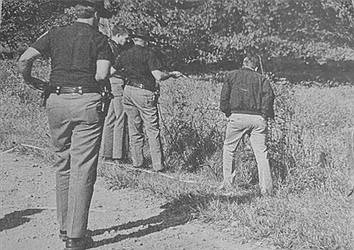Owls are January’s bird
January 18, 2023 at 6:38 p.m.

Being born in a certain month apparently has a bird associated with it, just like birth stones! If you celebrate a January birthday, your birth-month-bird is the owl. They are incredibly curious and inquisitive, masters of hiding and hunting, and have such keen vision we often don't notice them watching us. There are eight species of owls in Indiana: the Barn Owl, Barred Owl, Eastern Screech-owl, Great Horned Owl, Long-eared Owl, Northern Saw-whet Owl, Short-eared Owl, and the Snowy Owl.
For birders around the state, The Barred Owl is common to run into, though you'll likely hear them first, a very recognizable call that sounds like they are saying: “Who cooks for you, Who cooks for you all?”
Did you know that owls hunt other owls? In fact, the Great Horned Owls are the top predator of the smaller Barred Owl. If a Great Horned Owl moves into a Barred Owl's territory, it will quickly vacate the area and move on, although likely not very far. Barred Owls don't migrate and are generally sedentary by nature. Out of 155 Barred Owls studied, none of them ventured further than six miles away from where they were originally banded.
Check out these other Owl Facts, according to the Audubon Society:
*Many owl species have asymmetrical ears. When located at different heights on the owl's head, their ears are able to pinpoint the location of sounds in multiple dimensions.
*The eyes of an owl are not true “eyeballs.” Their tube-shaped eyes are completely immobile, providing binocular vision which fully focuses on their prey and boosts depth perception.
*Owls can rotate their necks 270 degrees. A blood-pooling system collects blood to power their brains and eyes when neck movement cuts off circulation.
*The tiniest owl in the world is the Elf Owl, which is 5 - 6 inches tall and weighs about 1 ½ ounces. The largest North American owl, in appearance, is the Great Gray Owl, which is up to 32 inches tall.
*The Northern Hawk Owl can detect—primarily by sight—a vole to eat up to a half a mile away.
*In fat years when mice are plentiful, usually monogamous Boreal Owls are apt to be promiscuous. Because easy prey means less work for parents feeding their young, males have been caught mating with up to three females, while females have been seen with at least one beau on the side.
*Barn Owls swallow their prey whole—skin, bones, and all—and they eat up to 1,000 mice each year.
*A group of owls is called a parliament. This originates from C.S. Lewis' description of a meeting of owls in The Chronicles of Narnia.
Latest News
E-Editions
Events
Being born in a certain month apparently has a bird associated with it, just like birth stones! If you celebrate a January birthday, your birth-month-bird is the owl. They are incredibly curious and inquisitive, masters of hiding and hunting, and have such keen vision we often don't notice them watching us. There are eight species of owls in Indiana: the Barn Owl, Barred Owl, Eastern Screech-owl, Great Horned Owl, Long-eared Owl, Northern Saw-whet Owl, Short-eared Owl, and the Snowy Owl.
For birders around the state, The Barred Owl is common to run into, though you'll likely hear them first, a very recognizable call that sounds like they are saying: “Who cooks for you, Who cooks for you all?”
Did you know that owls hunt other owls? In fact, the Great Horned Owls are the top predator of the smaller Barred Owl. If a Great Horned Owl moves into a Barred Owl's territory, it will quickly vacate the area and move on, although likely not very far. Barred Owls don't migrate and are generally sedentary by nature. Out of 155 Barred Owls studied, none of them ventured further than six miles away from where they were originally banded.
Check out these other Owl Facts, according to the Audubon Society:
*Many owl species have asymmetrical ears. When located at different heights on the owl's head, their ears are able to pinpoint the location of sounds in multiple dimensions.
*The eyes of an owl are not true “eyeballs.” Their tube-shaped eyes are completely immobile, providing binocular vision which fully focuses on their prey and boosts depth perception.
*Owls can rotate their necks 270 degrees. A blood-pooling system collects blood to power their brains and eyes when neck movement cuts off circulation.
*The tiniest owl in the world is the Elf Owl, which is 5 - 6 inches tall and weighs about 1 ½ ounces. The largest North American owl, in appearance, is the Great Gray Owl, which is up to 32 inches tall.
*The Northern Hawk Owl can detect—primarily by sight—a vole to eat up to a half a mile away.
*In fat years when mice are plentiful, usually monogamous Boreal Owls are apt to be promiscuous. Because easy prey means less work for parents feeding their young, males have been caught mating with up to three females, while females have been seen with at least one beau on the side.
*Barn Owls swallow their prey whole—skin, bones, and all—and they eat up to 1,000 mice each year.
*A group of owls is called a parliament. This originates from C.S. Lewis' description of a meeting of owls in The Chronicles of Narnia.





